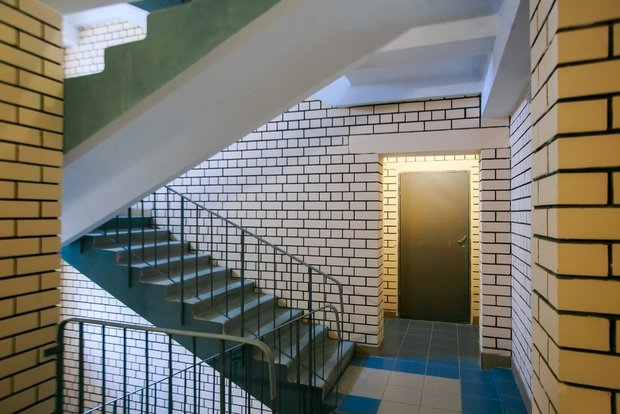‘The scheme is fine-tuned’: Tatarstan developers take out loans for 62,6bn
The interest rate within the financing of construction projects in the Volga Federal District — 2,52% — is one of the lowest in the country

As Realnoe Vremya found out after examining the Central Bank’s statistics for 2020, Russia’s developers took out loans for 2,7 trillion rubles within the finance for construction projects, which is nearly three times more than in 2019. The amount of loans in Tatarstan is around 62,6 billion rubles. With this indicator, the republic is first in the Volga Federal District and eighth in Russia. The number of escrow accounts in the country increased to more than 303,000, which is around seven times more than compared to the first 1,5 years of the shared equity reform. Read in Realnoe Vremya’s report more about how the market of new homes developed during the pandemic and how much money remains on escrow accounts.
62bn for construction projects — if this is much or little
Tatarstan is first in the Volga Federal District and eighth in Russia going ahead of even Leningrad Oblast with the total number of loans taken out to finance housing development — 62,6bn rubles.
However, experts think that the sum isn’t so big given global plans for increasing the population’s housing. As Antonina Darshinova, commercial director of KamaStroyInvest, says that not all developers have yet switched to escrow accounts, so this number (62,6bn) will grow with time. Nevertheless, the republic has good numbers, market players assume.
“To understand if this is much or little, the criterion should change a bit. At last, we should answer the question of how many square metres will be financed. To put it roughly, how many construction sites take out loans in banks in the total number of sites? Then it will be clear if it is much or little. I subjectively think that it is a very vague evaluation. 62 billion rubles must finance the construction of around a million square metres. I think that this number is quite good for Tatarstan,” Financial Director of Housing Investment Company GC Aydar Miftakhov explained.

Of course, Moscow with 1,2tr rubles is the leader in the amount of borrowed money. It is followed by Moscow Oblast — 338,2bn rubles, Saint Petersburg — 193,7bn rubles, Krasnodar Krai — 103,3bn rubles, Krasnoyarsk Krai — 92,8bn, Tyumen Oblast — 68,4bn, Sverdlovsk Oblast — 64,5bn, Tatarstan — 62,6bn and so on.
“Even such a low interest rate already looks unfair”
At the same time, the cost of borrowed money for developers in the Volga Federal District, according to the Central Bank’s information, turned out to be one of the lowest in Russia. The interest rate for regional developers totalled just 2,52%.
The rate is cheaper only in the North Caucasian Federal District, 1,64%. The most expensive loans are in the Central and Northern West Federal Districts, the average rate is 4,37%.
“The 2,52% rate in the Volga Federal District is probably an average rate in the market,” Antonina Darchinova assumed. “When escrow accounts are topped up, when a developer sells homes, the rate can decrease up to 0,01%. In this case, the developer already attracted a sufficient amount of investors’ money to provide the project. However, it can’t use the clients’ money and keeps paying the interest of the loan it chose unless the block of flats is delivered. Even such a low interest rate already looks unfair because the bank no longer has any risks. The bank assumes the risk of the case when the construction of a facility doesn’t end. Precisely this is why now banks carefully examine all documentation of projects, including construction documentation before granting a loan, and they often refuse to finance risky projects. This makes the whole system of shared equity more stable.”
As Aydar Miftakhov indicated, developers’ interest rate is really 2,5%. Banks provide developers financing for the construction of a specific facility, buyers open escrow accounts in the same bank, the expert notes. Money on the accounts becomes a source of cheap funding for developers’ loans. In such conditions, the rate can’t be 8-10%, Miftakhov stressed:
“A homebuyer is protected as much as possible according to new legislation. In general we can say that the founder of the developer will be held accountable for the company’s risks, through subsidisation. But the risk when a facility won’t be built is significantly delegated to the bank in a new scheme. It must return all money to clients, leave the partly built project and finish its construction and then sell it. Again, it is in theory, the way we were described the process of launching the escrow system. Only real cases will show how it will look, in fact.”
As Iskander Yusupov noted, the system of loan rates for a developer is dynamic, the more a develop sold homes, the lower the rate is. The rate also depends on the pace of the project, the expert noted: “If home sales rates are good, both the rate and its range fall, from 0 to 6%, moreover, it can vary in a company’s different facilities.
“If a developer can’t finish the construction for some reason, for instance, the company went bankrupt, Dom.RF or a new developer (completing the construction of troubled facilities) built the house with this money because the loan was granted, the construction is financed. Risks also reduce because the developer doesn’t depend on sales anymore. No matter how the sales go, the construction will be financed, except for some situations,” Iskander Yusupov added.
According to him, when the escrow system was introduced, the price had an impact on the square metre: “Earlier, we had to start the construction without waiting for a loan, the developer invested his own money, now one’s own money is needed too, but only for the compulsory first instalment”.
The interlocutor of the newspaper noted another peculiarity of the reform. Now the developer doesn’t need to sell homes cheaper in the beginning. Low prices allowed the developer to finance the beginning of the construction, there is no need anymore, the expert noted: “The develop knows that the bank will finance the construction and immediately can sell homes for desirable prices”.
“The price for a square metre grew. Interest rate, the rise in the construction cost, the absence of a cheaper foreign workforce influenced it. If additional costs arise, according to market laws, they are included in the cost, the company shouldn’t reduce profitability and risk its commitments,” Yusupov explained.

Construction boom during crisis
The number of escrow accounts in Russia nearly seven times in 2020 compared to the first 1,5 years of the activity in the new format — it is 303,878 accounts. The remaining money on them (as of 1 January 2021) totalled 1,2 trillion rubles. “The number of accounts where money was transferred is 19 times higher than in 2019, 48,992. The amount of money transferred from them is over 126,7bn.
Moscow is first in the number of escrow accounts — 60,000, Moscow Oblast is second — 24,800, Krasnodar Krai — 16,400. Tatarstan in this rating is eighth with 11,000. Saint Petersburg (13,400), Tyumen Oblast (13,000), Rostov and Sverdlovsk Oblast with 11,700 accounts are among the regions of Russia that outstripped the republic. Moreover, our republic is first in the number of escrow accounts in the Volga Federal District.
We can indirectly judge the amount of delivered housing within financing by the number of escrow accounts with money. Here Tatarstan ranks fifth in Russia, 2,395 accounts. We judge indirectly because money is not always deposited in an escrow account because a house is delivered.
“The transition to escrow accounts made the market more transparent and safer”

According to her, developers would like to get more freedom in the system of work with escrow accounts. For instance, they would like to receive money earlier if the amount of borrowed money already exceeds the amount of the loan: “But in general the transition to escrow accounts made the market more transparent and safer, this is why there is at the moment nothing to change dramatically”.
“We positively evaluate the scheme with escrow funding,” Aydar Miftakhov added. “The escrow mechanism could be improved. Earlier, in the old scheme, the developer could equally reinvest his income in some other project during the construction. Now this uneasy option is chosen only through loans with the future profit as security. This mechanism can precisely be improved: to increase the amount of the loan and reduce the rate. We have a positive experience of granting a loan for the future profit, thanks to Sberbank. We were the first in the republic to take out such a loan, which allowed allocating more money to build facilities and develop companies.”
As Iskander Yusupov reminded us, Unistroy was the first to begin operating according to escrow accounts in Tatarstan and one of the first in Russia: “There were some questions at the beginning of the new mechanism because of a long list of documents, long approval of banks (from 3 to 6 months). Nowadays there is no problem, the scheme is fine-tuned”.
“In 2,5 years of operation of the escrow system, a lot has already been said to improve the work. For instance, we have changed the scheme of ‘dispersal’. If earlier we had to wait for the first registered title for the developer to receive money (it could take a couple of months after delivering a home), now money can be received immediately after delivery,” he noted.